A sample text widget
Etiam pulvinar consectetur dolor sed malesuada. Ut convallis
euismod dolor nec pretium. Nunc ut tristique massa.
Nam sodales mi vitae dolor ullamcorper et vulputate enim accumsan.
Morbi orci magna, tincidunt vitae molestie nec, molestie at mi. Nulla nulla lorem,
suscipit in posuere in, interdum non magna.
|
Even before the landmark United States v. Microsoft Corp. antitrust case, competition law was a bit schizophrenic when it came to the question of interoperability. Monopolists have no general duty to make their products work with those of competitors, but what about the situation where a dominant firm deliberately re-designs products to render them incompatible with others? That is the provocative question raised by several pending antitrust lawsuits filed against Green Mountain Coffee, manufacturer of the Keurig line of single-serve coffee makers and coffee “pod” products.
TreeHouse Foods alleged in a complaint last winter that after its patent on “K-Cups” expired in 2012, Green Mountain:
abused its dominance in the brewer market by coercing business partners at every level of the K-Cup distribution system to enter into anticompetitive agreements intended to unlawfully maintain Green Mountain’s monopoly over the markets in which K-Cups are sold. Even in the face of these exclusionary agreements that have unreasonably restrained competition, some companies, such as TreeHouse, have fought hard to win market share away from Green Mountain on the merits by offering innovative, quality products at substantially lower prices. In response, Green Mountain has announced a new anticompetitive plan to maintain its monopoly by redesigning its brewers to lock out competitors’ products. Such lock-out technology cannot be justified based on any purported consumer benefit, and Green Mountain itself has admitted that the lock-out technology is not essential for the new brewers’ function.
In the consolidated multi-district litigation that ensued, Green Mountain is specifically charged with designing a so-called “Keurig 2.0” brewer which features technology that allows it to detect whether a coffee cartridge is one of Keurig’s K-Cups or is made by a third party that does not have a licensing agreement with the company. The machine will not brew unlicensed coffee pods.
The federal court overseeing the MDL cases denied the plaintiffs’ motion for an injunction on procedural grounds in September, issuing an opinion which reasoned that commercial success of the “2.0” brewers was uncertain and that coffee competitors would still have open access to some 26 million Keurig “1.0” machines for several years. In other words, the court did not reach the merits of the monopolization claim against Green Mountain.
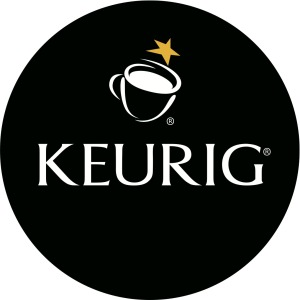
So where does that leave Keurig? As Ali Sternburg observed before revelations of its new 2.0 technology, Green Mountain’s prior 20 years of patent protection allowed the company to build a competitive advantage by “cultivating its brand (which likely involves trademark protection), honing its supply chain efficiencies, and generally maintaining its dominance due to having the first-mover advantage.” More than ten years before those patents first issued, moreover, the federal courts had ruled that new product introductions by monopoly firms — in one well-known instance, Kodak — would not be considered an antitrust violation because “a firm that pioneers new technology will often introduce the first of a new product type along with related, ancillary products that can only be utilized effectively with the newly developed technology.”
Continue reading K-Cups, Innovation and Interoperability
Last month a Paris appeals court annulled some €3.9 million (US$5.2M) in fines imposed on endive producers and their trade associations by the French Competition Authority (the Autorité de la concurrence). Not dissuaded, that French competition agency just slapped a €1.6M (US$2.1M) fine on Caribbean yogurt maker Societe Nouvelle des Yaourts de Littee (SNYL) for falsely questioning the safety and quality of a rival brand in Martinique and Guadeloupe, characterizing the practice as “abuse of dominance” in the marketplace. 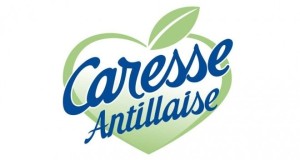
This epitomizes a fundamental disconnect between antitrust law and competition policy in the U.S. and that of many other nations. (No, the French are not alone…) American antitrust principles and decisions generally limit the reach of competition law — aside from competitor collision like price-fixing cartels — to business conduct that uses market power in an exclusionary manner. As the Supreme Court emphasized in 1993, “[e]ven an act of pure malice by one business competitor against another does not, without more, state a claim under the federal antitrust laws; those laws do not create a federal law of unfair competition or ‘purport to afford remedies for all torts committed by or against persons engaged in interstate commerce.'” In sharp contrast, the FCA reasoned about yogurt that “the dissemination of misleading and disparaging remarks by a dominant operator against one of its competitors is a serious practice with regard to competition rules.”
“Between December 2007 and December 2009, SNYL broadcast information discrediting the sanitary quality of Laiterie de Saint-Malo products using the questionable results of bacteriological tests and questioning the irregular consumption deadlines affixed to its products,” the FCA reported in a (translated) statement. This led a number of retailers to pull Malo products from shelves for an extended period. “This behavior had the effect of limiting product sales of Laiterie de Saint-Malo in Martinique and Guadeloupe — an abuse of dominant position prohibited by Article L 420-2 of the Commercial Code,” the FCA concluded.
In the United States, legal standards for proving antitrust claims are rightly rigorous; they are strict in order to reduce the risk that enforcement of the antitrust laws may chill the very sort of vigorous, competitive conduct they are intended to encourage. It’s been true forat least 35 years that the Sherman Act “is not a panacea for all evils that may infect business life.” Legendary antitrust law scholars Phillip Areeda and Herbert Hovenkamp have advocated a nearly insurmountable presumption against deception and fraud serving as the basis for a monopolization claim, a presumption most courts have readily embraced. As one court of appeals cogently explained, “[i]solated tortious activity alone does not constitute exclusionary conduct for purposes of a [Sherman Act] § 2 violation, absent a significant and more than a temporary effect on competition, and not merely on a competitor or customer…. Business torts will be violative of § 2 only in ‘rare gross cases.’”
The difference is that between competition and consumer protection, which are quite distinct concepts in American jurisprudence. If a firm uses a monopoly to harm competition without business justification, that’s an antitrust violation. If a firm lies about a competitor’s products or runs false advertising, that’s a deceptive business practice. The two legal regimes are directed at different constituencies and conduct, which is why the Federal Trade Commission Act was amended in the 1930s to add a separate provision (Section 5) for “unfair or deceptive” business practices, and why the FTC accordingly is separated into its two principal divisions: the Bureau of Competition and the Bureau of Consumer Protection. Likewise, the Lanham Act specifically prohibits false advertising and provides a damages remedy for injured companies. Thus, false representations around a firm’s own, or it’s competitor’s, products can be legally actionable, as the Supreme Court again ruled this year in a case about beverage labeling (Pom Wonderful v. Coca-Cola). They’re just not an antitrust violation in the United States.
Continue reading There Go the French Again On Competition
The French have a wonderful saying, la plus ça change, plus c’est la même chose, which roughly translates to “the more things change, the more they remain the same.” That’s an apt description of current, high-profile wrangling in the United States about music licensing under federal copyright law. Despite all the jarring changes to the recording industry over the past decade — remember Tower Records? — it’s the same issues and (mostly) the same players as always, arguing over a Rube Goldberg-like system of arcane complexity.
Today the House of Representatives (specifically the Judiciary Committee’s Subcommittee on Courts, Intellectual Property and the Internet) will hold a second round of hearings on music licensing. This inquiry coincides with a recent announcement by the Justice Department that it will review — and solicit public feedback on — the 73-year-old antitrust decrees that govern ASCAP and BMI, two groups which act as licensing clearinghouses for a range of outlets that use music, including radio stations, websites and even restaurants and doctors’ offices. As the New York Times has observed, “billions of dollars in royalties are at stake, and the lobbying fight that is very likely to unfold would pit Silicon Valley giants like Pandora and Google against music companies and songwriter groups.”

According to the consent decrees, which were instituted in 1941 after federal antitrust investigations, ASCAP and BMI cannot refuse licenses to music outlets that request them. These two “performance rights organizations” (PROs) have operated under this structure for decades, but in recent years have lost important legal cases having to do with licensing. Earlier in 2014, for instance, ASCAP lost a rate-setting case against Pandora in which several prominent music publishing executives were criticized harshly by the presiding federal judge. In response, major publishers like Sony and Universal Music Group have begun to openly discuss withdrawing from ASCAP and BMI, a move that would further complicate the licensing process.
Continue reading Music Licensing—La Plus Ça Change?
The strangely named Rockstar Consortium has been in the news again, in part because some of its members just formed a new lobbying group, the Partnership for American Innovation, aimed at preventing the current political furor over patent trolls from bleeding into a general overhaul of the U.S. patent system. Yet Rockstar is perhaps the most aggressive patent troll out there today. Hence the mounting pressure in Washington, DC for the Justice Department’s Antitrust Division — which signed off on the initial formation of Rockstar two years ago — to open up a formal probe into the consortium’s patent assertion activities directed against rival tech firms, principally Google, Samsung and other Android device manufacturers.
Usually the fatal defect in antitrust claims of horizontal collusion is proving that competing firms acted in parallel fashion from mutual agreement rather than independent business judgment. In the case of Rockstar — a joint venture among nearly all smartphone platform providers except Google — that problem is not present because the entity itself exists only by agreement among its owner firms. The question for U.S. antitrust enforcers is thus the traditional substantive inquiry, under Section 1 of the Sherman Act, whether Rockstar’s conduct is unreasonably restrictive of competition.

Despite its cocky moniker, Rockstar is simply a corporate patent troll hatched by Google’s rivals, who collectively spent $4.5 billion ($2.5 billion from Apple alone) in 2012 to buy a trove of wireless-related patents out of bankruptcy from Nortel, the long-defunct Canadian telecom company. It is engaged in a zero-sum game of gotcha against the Android ecosystem. As Brian Kahin explained presciently on DisCo then, Rockstar is not about making money, it’s about raising costs for rivals — making strategic use of the patent system’s problems for competitive advantage. Creating or collaborating with trolls is a new game known as privateering, which allows big producing companies to do indirectly what they cannot do directly for fear of exposure to expensive counterclaims. Essentially, it’s patent trolling gone corporate. As another pro-patent lobbying group said at the time, Rockstar represents “a perfect example of a ‘patent troll’ — they bought the patents they did not invent and do not practice; and they bought it for litigation.” Predictiv’s Jonathan Low put it quite well in his The Lowdown blog:
The Rockstar consortium, perhaps more appropriately titled “crawled out from under a rock,” is using classic patent troll tactics since their own technologies and marketing strategies have fallen short in the face of the Android emergence as a global power. Those tactics are to buy patents in hopes of finding cause, however flimsy, to charge others for alleged violations of patents bought for this purpose. Rockstar calls this “privateering” in order to distance itself from the stench of patent trolling, but there are no discernible differences.
Continue reading Rockstar’s Patent Trolling Conspiracy
Google’s competitors “are locked in hand-to-hand combat with Google around the world and have the mistaken belief that criticizing us will influence the outcome in other jurisdictions.”
The coalition of companies that for years has unsuccessfully been pressing antitrust complaints against Google for search “abuse” — FairSearch.org — insists Google must be restrained for fear the Mountain View company will steer search users to its commercial products, like flight bookings. The group’s most recent publicity event, held at the ABA’s Antitrust Section annual spring meeting last week, repeated those same claims. FairSearch ventured as well into new ground, attacking what it terms Google’s unreasonably restrictive Android licensing practices.
There are four straightforward reasons FairSearch is wrong.
1. Predictions of Foreclosure Have Proven Totally Baseless.
When Google purchased travel software maker ITA in 2011, FairSearch maintained that Google would exploit its control over the ITA tools that power other online travel agencies, along with many of the airlines’ own sites, to usher competing search services off the stage, then jack up ad rates for travel queries and favor flights from particular airlines. 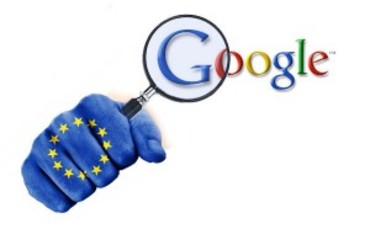 Three years later, nothing like that has happened. In fact, Google Flight Search is not among the top 100 or even the top 200 travel listing sites. Rather, it’s in 244th place, behind Hipmunk, with just .04% of travel queries. Real-world experience, in other words, reveals that the predicted competitive risks on which FairSearch bases its advocacy are both hypothetical and fanciful. Continue reading Four Reasons Fairsearch Is Wrong Three years later, nothing like that has happened. In fact, Google Flight Search is not among the top 100 or even the top 200 travel listing sites. Rather, it’s in 244th place, behind Hipmunk, with just .04% of travel queries. Real-world experience, in other words, reveals that the predicted competitive risks on which FairSearch bases its advocacy are both hypothetical and fanciful. Continue reading Four Reasons Fairsearch Is Wrong
When is a prediction not worth relying upon? For purposes of analyzing mergers under the Clayton Antitrust Act, a recent decision in favor of the Justice Department indicates that predictions are worth less — perhaps are even worthless — when they are contradicted by the actual facts of the marketplace. The government’s successful legal challenge a couple of weeks ago to the merger of two Internet start-ups ironically shows that the force of predictive judgments remains powerful, even when courts could employ reality as a basis for accurate comparison.
Some background. A 2013 DisCo post authored by the undersigned contrasted “future markets,” where the contours of products and entry do not yet exist and cannot reliably be predicted, with “nascent markets,” in which those features indeed exist but only in their infancy. My thesis was that antitrust enforcement in the latter is preferable because looking back at nascent markets once they have a chance to develop gives the government a more accurate basis on which to assess the actual impact of mergers and concentration than rank projections in which policymakers have no comparative expertise.
The case used to illustrate this theme was United States v. Bazaarvoice, Inc., in which the Justice Department sued to unwind a 2012 merger, already completed, between two firms in what it called the online ratings and reviews platform market. I concluded that
by challenging the merger post-consummation, DOJ has avoided basing its enforcement decisions on predictions of future markets and instead the case should rise or fall on the accuracy of its ex post analysis of actual competitive effects.
That’s not at all what happened, though.
Continue reading Is Bazaarvoice Bizarre?
No one in government or business has a crystal ball. Yet predictions of what is coming in markets characterized by rapid and disruptive innovation seem to be being made more often by competition enforcement agencies these days than in the past. It’s a trend that raises troublesome issues about the role of antitrust law and policy in shaping the future of competition.
Take two examples. The first is Nielsen’s $1.3 billion merger with Arbitron this fall. Nielsen specializes in television ratings, less well-known Arbitron principally in radio and “second screen” TV. Nonetheless, the Federal Trade Commission — by a divided 2-1 vote — concluded that if consummated, the acquisition might lessen competition in the market for “national syndicated cross-platform measurement services.” The consent decree settlement dictates that the post-merger firm sell and license, for at least eight years, certain Arbitron assets used to develop cross-platform audience measurement services to an FTC-approved buyer and take steps designed to ensure the success of the acquirer as a viable competitor.
In announcing the decree, FTC chair Edith Ramirez noted that “Effective merger enforcement requires that we look carefully at likely competitive effects that may be just around the corner.” That’s right, and the underlying antitrust law (Section 7 of the Clayton Act) has properly been described as an “incipiency” statute designed to nip monopolies and anticompetitive market structure in the bud before they can ripen into reality. Nonetheless, the difference is that making a predictive judgment about future competition in an existing market is different from predicting that in the future new markets will emerge. No one actually offers the advertising Nirvana of cross-platform audience measurement today. Nor is it clear that the future of measurement services will rely at all on legacy technologies (such as Nielsen’s viewer logs) in charting audiences for radically different content like streaming “over the top” television programming.

The problem is that divining the future of competition even in extant but emerging markets (“nascent” markets) is extraordinarily uncertain and difficult. That’s why successful entrepreneurs and venture capitalists make the big bucks, for seeing the future in a way others do not. That sort of vision is not something in which policy makers and courts have any comparative expertise, however. Where the analysis is ex post, things are different. In the Microsoft monopolization cases, for instance, the question was not predicting whether Netscape and its then-revolutionary Web browser would offer a cross-platform programming functionality to threaten the Windows desktop monopoly — it already had — but rather whether Microsoft abused its power to eliminate such cross-platform competition because of the potential long-term threat it posed. By contrast, in the Nielsen-Arbitron deal, the government is operating in the ex ante world in which the market it is concerned about, as well as the firms in and future entrants into that market, have yet to be seen at all.
This qualitative difference between nascent markets and future markets (not futures markets, which hedge the future value of existing products based on supply, demand and time value of money) is important for the Schumpterian process of creative destruction. When businesses are looking to remain relevant as technology and usage changes, they are betting with their own money. The right projection will yield a higher return on investment than bad predictions. Creating new products and services to meet unsatisfied demand may represent an inflection point, “tipping” the new market to the first mover, but it may also represent the 21st century’s Edsel or New Coke, i.e., a market that either never materializes or that develops very differently from what was at first imagined.
Continue reading Future Markets, Nascent Markets and Competitive Predictions
Are copyright holders allowed to decide without legal constraint to whom they will license their content and on what terms? That is the issue facing Pandora and other new streaming radio firms, for whom music and its associated licensing fees represent the biggest hurdle to commercial success against more established broadcast radio competitors. The answer lies in the sometimes obscure interface between the Copyright Act and antitrust law in the U.S.
In Pandora Media, Inc. v. American Society of Composers, Authors & Publishers, an antitrust case currently pending in federal court in New York, the streaming company is suing ASCAP and some of the major record labels for “withdrawing” their content from the ASCAP joint licensing venture, thus forcing individualized negotiations. It’s a leading-edge dispute, scheduled for trial by year-end, that may help catalyze a new approach to the old question of whether — and if so to what extent — owners of copyrighted digital content are permitted to refuse to deal with competing distribution channels on dramatically different commercial terms.

Most Project DisCo readers likely know about Pandora, a prominent start-up in the Internet radio space — one of the hottest markets around these days, especially given the launch of iTunes Radio by Apple. What is less understood is that streaming music on the ‘Net is fraught with legal issues surrounding copyright, constraints that effectively function as a barrier to the more widespread adoption of such disruptive technologies.
That’s not a lot different from the case of streaming Internet television pioneer Aereo, which as Ali Sternburg points out is caught in legal limbo between different rules (from conflicting judicial decisions) in different regions of the county: and a whopping legal defense bill as well. Copyright in addition plays a key role in the current exemption of traditional over-the-air radio stations from licensing music, an implicit subsidy the recording industry has been lobbying to change for years.
The Pandora-ASCAP fight represents a tricky issue at the intersection of intellectual property (IP) and antitrust. The ASCAP litigation actually dates to 1941, when the government entered into a consent decree settling a complaint that alleged monopolization of performance rights licenses. The settlement, still in place more than 60 years later, requires the organization to license “all of the works in the ASCAP repertory.” A month ago, presiding District Judge Denise Cote (who also issued the decision finding Apple’s e-book pricing deals a violation of the antitrust laws) entered summary judgment for Pandora. She reasoned that the consent decree gave Pandora the legal right to a blanket license
even though certain music publishers beginning in January 2013 have purported to withdraw from ASCAP the right to license their compositions to “New Media” services such as Pandora. Because the language of the consent decree unambiguously requires ASCAP to provide Pandora with a license to perform all of the works in its repertory, and because ASCAP retains the works of “withdrawing” publishers in its repertory even if it purports to lack the right to license them to a subclass of New Media entities, [Pandora must prevail].
Continue reading Opening Pandora’s Box: Copyright and Antitrust

While lots of bits and ink have been devoted to Apple Inc.’s well-publicized run-in with the Department of Justice over its role in a price-fixing conspiracy among e-book publishers, most of the media has not analyzed the array of private antitrust cases — mainly consumer class actions — brought against the iconic company. These typically allege that Apple’s closed ecosystem of iTunes, the iPod and iPhone are unlawful efforts to monopolize various media or hardware markets. After looking more closely at the merits of these various cases, I predicted in June that
the choice of a vertically integrated structure is unlikely to get Apple into antitrust trouble — either private or governmental, and whether in the United States or the EU — unless Tim Cook and company add some seriously bad acts to their competitive arsenal
Yesterday, a federal court of appeals (the Ninth Circuit in San Francisco) tossed one of the private antitrust class actions, which had challenged the lawfulness of the proprietary DRM technology Apple initially used for downloadable digital music, claiming the lack of interoperability inflated iTunes music prices. The court’s opinion concludes on procedural grounds that
under basic economic principles, increased competition — as Apple encountered in 2008 with the entrance of Amazon — generally lowers prices. See Leegin Creative Leather Prods. v. PSKS, Inc., 551 U.S. 877, 895 (2007); Barr Labs., Inc v. Abbott Labs., 978 F.2d 98, 109 (3d Cir. 1992). The fact that Apple continuously charged the same price for its music irrespective of the absence or presence of a competitor renders implausible [the plaintiffs’] conclusory assertion that Apple’s [DRM] software updates affected music prices.
I’m glad to have been right. More important, though, is one obvious point, which bears repeating: “On the pure antitrust merits, whether to pay off these class action plaintiffs is a decision Apple really should not have to make.” But as we say in the law, “deep pocket” defendants will always be put in that rather untenable position.
Note: Originally prepared for and reposted with permission of the Disruptive Competition Project.
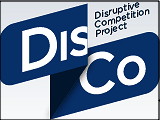
Tech business news these days is dominated by headlines about the trial of United States v. Apple, Inc., where the U.S. Department of Justice (DOJ) is charging Cupertino with masterminding a massive conspiracy among publishers to increase prices for e-books. Apple’s defense lawyers and CEO Tim Cook call the allegations “bizarre.” What is really bizarre, though, is the plethora of private treble-damages lawsuits seeking to hold Apple liable under the antitrust laws for its vertical integration strategy with iTunes, iPhone and the App Store.
Just a bit more than a decade ago, Apple Computer (having since changed its corporate name) was decidedly stuck in the backwater of the PC industry. Its introduction of the USB-only iMac in 1998 failed to change the marketplace dynamics, where Apple’s closed Macintosh design and refusal to license its Mac OS to other manufacturers was viewed as the source of diminishing relevance. Apple was such a non-entity that its presence was flatly rejected by the federal courts as part of the relevant market in the Microsoft monopolization cases. Pundits predicted that like the fabled Betamax, Apple’s proprietary strategy would lead to its ultimate competitive demise.
But then along came the “iLife” software suite and the first generation iPod. What differentiated these products was not that Apple invented the technologies — after all, MP3s had been around for years and digital cameras as well — but rather that they all worked well together. Since then, the same business model has been applied to iPads and iPhones: native sync integrated with the Mac OS and Apple’s iCloud service, plus software content, whether media or apps, available easily through Apple’s online stores, with the company taking a 30% cut of retail prices for third-party content.
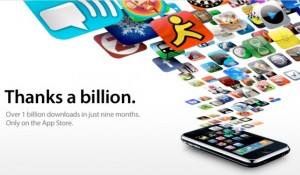 When the iPod and iPhone proved to be winners, big ones, Apple’s financial fortunes turned around dramatically. iTunes now is the largest digital music retailer, accounting for some 60% of all downloads, and the various iPhones are the most popular smartphones globally. Apple’s annual revenues soared from $5 billion in 2001 to $108 billion last year. But what short memories we have. The plaintiffs’ antitrust bar accuses Apple of unlawfully monopolizing these markets and has filed a series of sometimes confusing consumer class actions challenging Apple’s vertical integration and closed product systems. (Nine separate lawsuits have been unified into one action in California focusing on the tight grip Apple exerts on the iPhone’s services and applications; other individual and class suits are pending elsewhere.) The EU reportedly has investigated Apple’s App Store restrictions, and more recently its deals with European wireless carriers, to determine whether the company “abused” a “dominant position.” When the iPod and iPhone proved to be winners, big ones, Apple’s financial fortunes turned around dramatically. iTunes now is the largest digital music retailer, accounting for some 60% of all downloads, and the various iPhones are the most popular smartphones globally. Apple’s annual revenues soared from $5 billion in 2001 to $108 billion last year. But what short memories we have. The plaintiffs’ antitrust bar accuses Apple of unlawfully monopolizing these markets and has filed a series of sometimes confusing consumer class actions challenging Apple’s vertical integration and closed product systems. (Nine separate lawsuits have been unified into one action in California focusing on the tight grip Apple exerts on the iPhone’s services and applications; other individual and class suits are pending elsewhere.) The EU reportedly has investigated Apple’s App Store restrictions, and more recently its deals with European wireless carriers, to determine whether the company “abused” a “dominant position.”
Continue reading Five Reasons Apple’s Private Antitrust Risks Are Minimal
|
|




 Three years later,
Three years later, 



